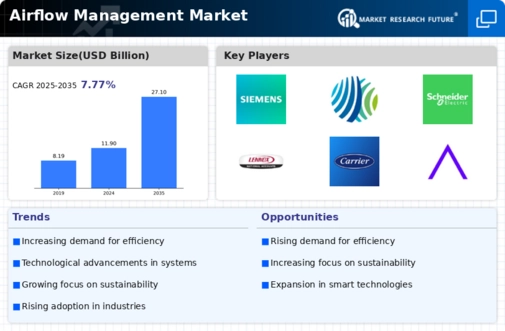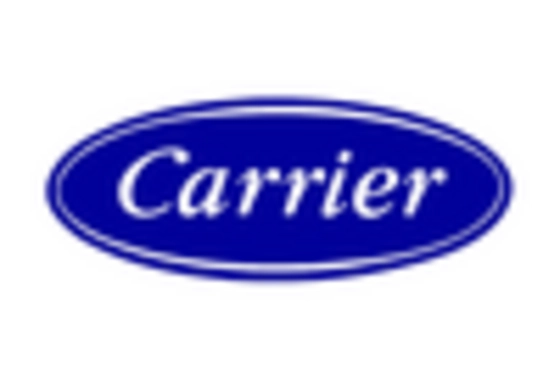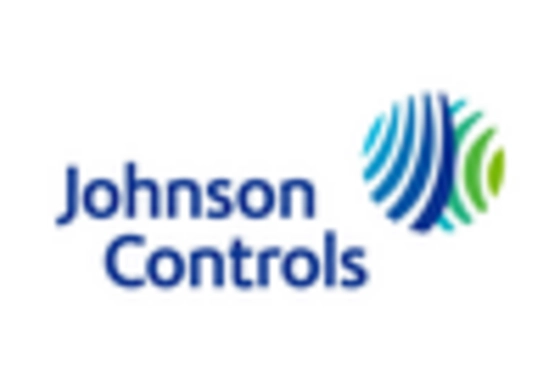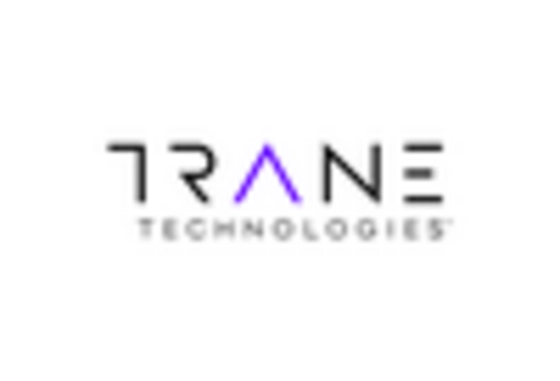Emphasis on Indoor Air Quality
The emphasis on indoor air quality (IAQ) is becoming a pivotal driver in the Airflow Management Market. Organizations are increasingly aware of the health implications associated with poor air quality, leading to a heightened focus on effective airflow management solutions. Enhanced IAQ not only contributes to employee well-being but also boosts productivity. Recent studies suggest that improved air quality can lead to a 10% increase in productivity levels. Consequently, businesses are investing in advanced airflow management systems that ensure optimal ventilation and filtration. This growing awareness and investment in IAQ solutions are expected to significantly influence the trajectory of the Airflow Management Market.
Increasing Regulatory Compliance
The Airflow Management Market is significantly influenced by the increasing regulatory compliance requirements across various sectors. Governments and regulatory bodies are imposing stricter guidelines on energy consumption and emissions, compelling organizations to adopt more efficient airflow management practices. For example, regulations aimed at reducing greenhouse gas emissions are prompting industries to invest in advanced airflow management systems that meet compliance standards. This shift not only helps organizations avoid penalties but also enhances their reputation as environmentally responsible entities. As a result, the demand for compliant airflow management solutions is expected to rise, thereby contributing to the expansion of the Airflow Management Market.
Rising Demand for Energy Efficiency
The Airflow Management Market is experiencing a notable surge in demand for energy-efficient solutions. As organizations increasingly prioritize sustainability, the need for systems that optimize airflow while minimizing energy consumption becomes paramount. According to recent data, energy-efficient airflow management systems can reduce energy costs by up to 30%. This trend is particularly evident in sectors such as data centers and manufacturing, where operational costs are closely monitored. The integration of advanced technologies, such as variable speed drives and smart sensors, further enhances the efficiency of airflow management systems. Consequently, this driver is likely to propel the growth of the Airflow Management Market as businesses seek to balance operational efficiency with environmental responsibility.
Growth of Data Centers and IT Infrastructure
The rapid growth of data centers and IT infrastructure is a significant driver for the Airflow Management Market. As the demand for cloud computing and data storage continues to escalate, data centers are increasingly focusing on optimizing their airflow management to ensure efficient cooling and prevent overheating. Market analysis reveals that the data center segment is projected to account for a substantial share of the airflow management market, driven by the need for reliable and efficient cooling solutions. This trend indicates that as data centers expand, the demand for advanced airflow management systems will likely increase, further propelling the market forward.
Technological Advancements in Airflow Management
Technological advancements play a crucial role in shaping the Airflow Management Market. Innovations such as IoT-enabled devices and AI-driven analytics are transforming traditional airflow management systems into smart solutions. These technologies facilitate real-time monitoring and control, allowing for more precise airflow regulation. For instance, the implementation of predictive maintenance can reduce downtime and enhance system reliability. Market data indicates that the adoption of smart airflow management solutions is expected to grow at a compound annual growth rate of over 15% in the coming years. This trend suggests that organizations are increasingly recognizing the value of integrating cutting-edge technology into their airflow management strategies, thereby driving the overall market growth.


















Leave a Comment